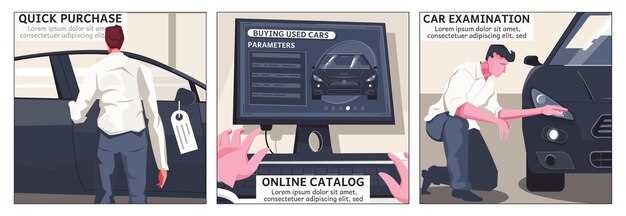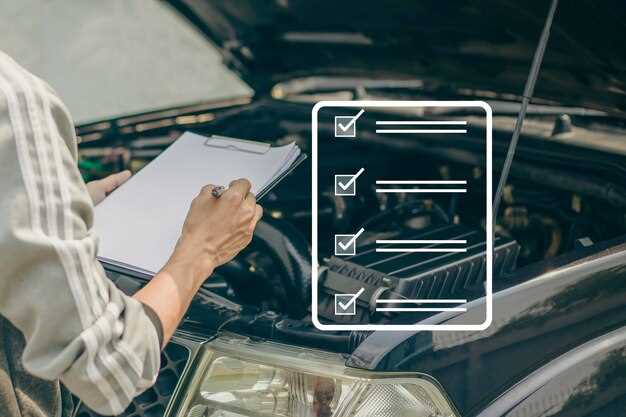
Purchasing a salvage car can be a cost-effective option, but it comes with its own set of challenges, especially when it comes to understanding the vehicle’s past. A salvage car typically has a history of severe damage, often resulting in it being declared a total loss by an insurance company. Therefore, it is essential to verify the car’s history report to make an informed decision. One of the most reputable sources for this information is CARFAX, which provides detailed reports based on a vehicle’s identification number (VIN).
To begin the verification process, you should first obtain the VIN of the salvage car in question. This unique identifier allows you to access its history report, which includes crucial information such as past accidents, ownership changes, and whether the vehicle has been branded as salvage. Using CARFAX or similar services can reveal red flags that might make you reconsider your purchase.
Aside from accident history, a thorough report will also include data about any title changes related to the vehicle. Ensuring that the report accurately reflects the car’s status will help you identify any discrepancies that may pose legal or financial risks in the future. Remember, investments in a salvage car should not be taken lightly–always verify the history report to protect yourself and your finances.
Accessing and Interpreting Carfax for Salvage Vehicles
To ensure a well-informed purchase, accessing a Carfax report is essential for understanding the history of a salvage vehicle. First, visit the Carfax website and enter the Vehicle Identification Number (VIN) in the designated search field. This unique identifier allows you to pull the specific history associated with that vehicle, including any salvage titles it may have received.
Once the report is generated, focus on several key sections to interpret the vehicle’s history accurately. First, examine the title history: look for any indications of ‘salvage’ or ‘rebuilt’ titles. This information reveals if the car was previously declared a total loss by an insurance company.
Next, review the accident history. Carfax lists any reported accidents, severity ratings, and whether they contributed to the salvage title. Understanding the types of damage a vehicle has sustained provides insight into its current condition and potential future issues.
Additionally, pay attention to the service records provided in the report. Regular maintenance details can indicate how well the previous owner cared for the vehicle, which is crucial when considering a salvage car. A lack of service documentation might suggest neglect.
Finally, scrutinize the odometer readings for consistency. In cases of salvage cars, odometer manipulation can occur, so ensure that the recorded mileage aligns with the vehicle’s age and history.
By carefully analyzing these aspects of the Carfax report, you can make a more informed decision regarding the purchase of a salvage vehicle, weighing the potential risks against the benefits.
Identifying Red Flags in a Salvage History Report

When evaluating a salvage car, it’s crucial to scrutinize the history report for any signs of significant issues. These red flags can indicate underlying problems that may affect the vehicle’s safety, reliability, and overall value.
First, check for the reason behind the salvage title. If the report indicates damage from a flood, fire, or extensive collision, these are serious concerns. Flood-damaged vehicles often suffer from electrical issues, while fire-damaged cars may have structural weaknesses. A history of major accidents can lead to a compromise in the vehicle’s integrity, making it unsafe for road use.
Another important aspect is the vehicle’s repair history. Look for documentation on repairs and parts replaced. Lack of detailed repair information can signify that the vehicle was not properly restored after sustaining damage, which poses a risk to performance. Ensure that it has undergone repairs compliant with safety standards.
Examine the number of previous owners. A salvage car with multiple owners could indicate that it has been sold frequently due to hidden problems. Ideally, fewer owners suggest stability and potentially less unresolved issues.
Verify the dates of the events listed in the history report. Any discrepancies, such as repair dates that do not align with accident dates, may indicate tampering or a lack of transparency regarding the vehicle’s past. Consistency in timelines provides a clearer picture of the car’s history.
Lastly, look for outstanding liens or unresolved recalls. An active lien might complicate ownership transfer, while unresolved recalls could signify safety hazards that have yet to be fixed. Both situations require careful consideration before proceeding with a salvage vehicle purchase.
By identifying these red flags in a salvage history report, potential buyers can make informed decisions, ultimately avoiding costly mistakes and ensuring greater safety on the road.
Cross-Referencing Additional Sources for Complete Vehicle History

When it comes to verifying the history of a salvage car, relying solely on a single report may not provide a full picture. Cross-referencing additional sources can significantly enhance your understanding of the vehicle’s past, ensuring a more informed decision.
Start by checking the National Insurance Crime Bureau (NICB) database. This resource offers information on vehicles that have been reported stolen or declared a total loss by insurance companies. By inputting the Vehicle Identification Number (VIN), you can identify any potential risks associated with the salvage title.
Next, consider state registration records. Each state maintains records of all vehicles registered within its jurisdiction. Contacting your local DMV or accessing their online database can reveal essential details about the vehicle’s history, including previous ownership and any title changes. This can be particularly useful to confirm the legitimacy of the salvage status.
Utilizing online forums and social media groups dedicated to car enthusiasts or salvage vehicles can provide anecdotal evidence from previous owners. These platforms often facilitate discussions where users share experiences and insights about specific makes and models. You may uncover potential issues and recalls that aren’t always documented in official reports.
Lastly, obtaining a professional inspection from a certified mechanic can reveal structural damage or potential repairs. This inspection, coupled with the history reports, allows buyers to assess the vehicle’s current condition thoroughly. Mechanics might also have access to proprietary information that sheds light on recalls or specific issues related to salvaged vehicles.
By cross-referencing multiple sources for a complete vehicle history, you can make a more educated choice regarding your salvage car purchase, minimizing potential regrets in the future.
